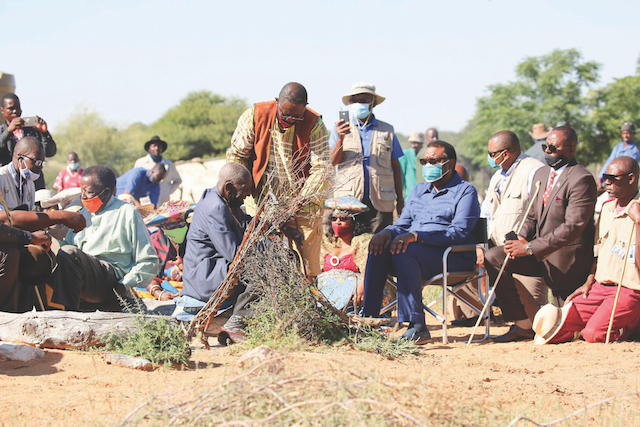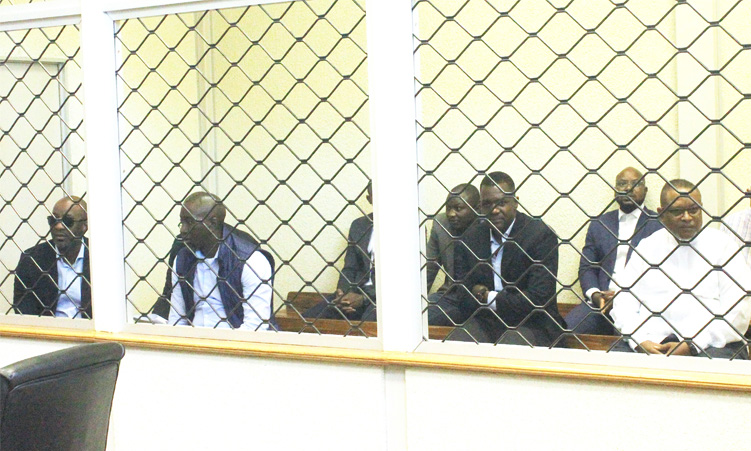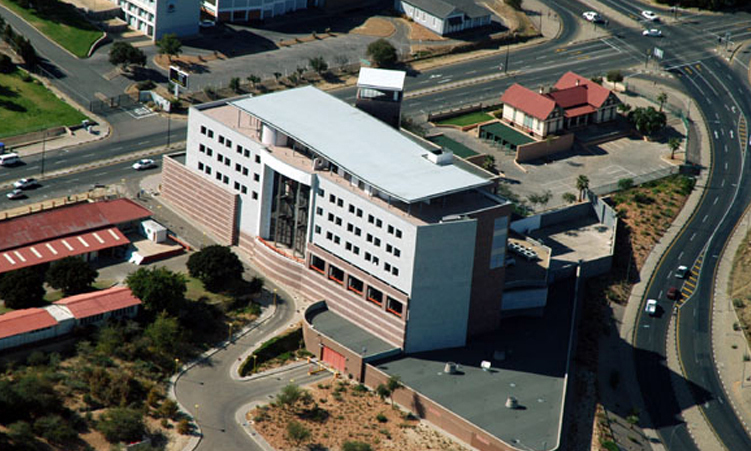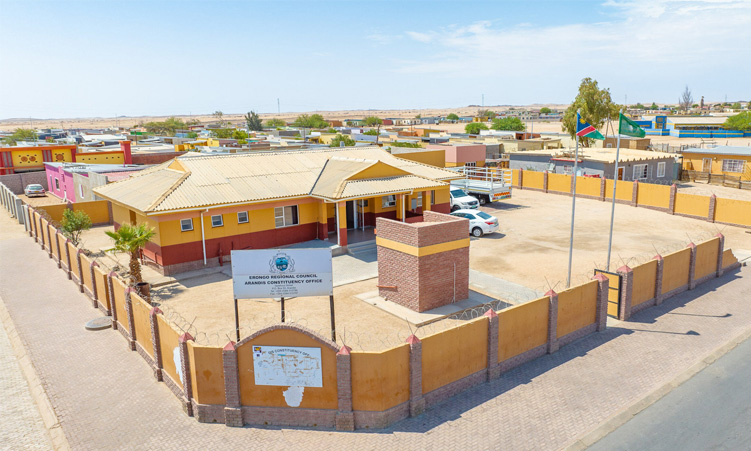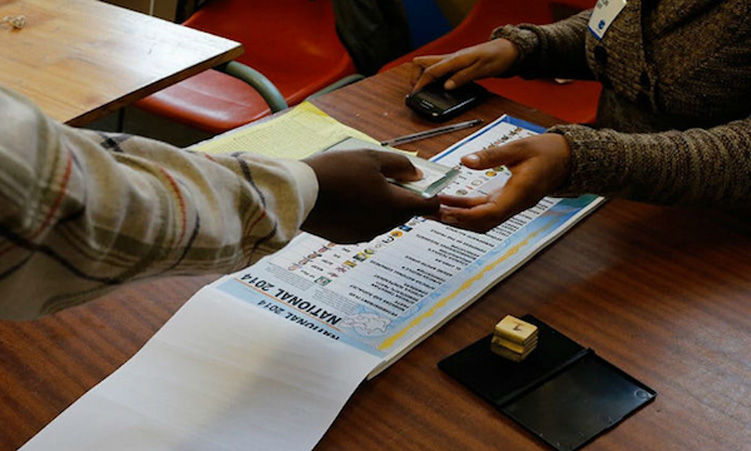CHARMAINE NGATJIHEUE and SHELLEYGAN PETERSEN“I have been waiting for this for a long time. I wanted this, and now it is happening.”
These were the words of the late chief Hosea Kutako’s nephew, Abisai Mungendje (97), as he witnessed the groundbreaking ceremony of the nationalist leader’s shrine at their home village in the Omaheke region on Friday.
Mungendje described his uncle as a unifier who fought for the freedom of all Namibians.
Kutako died in 1978, aged 100, with no known children.
Mungendje spoke to the media after the groundbreaking ceremony for the construction of a chief Hosea Kutako Museum and Homestead Shrine at his house located at Toasis in the Aminuis constituency, attended by president Hage Geingob.
The shrine forms part of Geingob’s 2018 vision of honouring national heroes and heroines through the establishment of monuments and shrines.
Mungendje said the late chief was very fond of him and would take him along to meetings or allow him to drive his car.
“…he told me I did not need to work, but should stay at home with him. He later said I was to inherit 70 head of cattle when he dies,” he said.
Mungendje in 1964 went into exile in Botswana and would sneak into Namibia occasionally by foot to obtain supplies.
When Kutako died in 1978, he said he had to sneak into Namibia for his uncle’s funeral.
Corroborating the above sentiments, Geingob described Kutako as a leader and unifier of all Namibians.
Officiating at the groundbreaking ceremony, the president said Kutako embodied an acute sense of solidarity and unity of purpose through his work.
“By honouring chief Hosea Kutako through the envisaged museum and shrine, we, as a people, united under the banner of independence, are acknowledging the significance of the ideas and values this great man exuded throughout his life,” he said.
Geingob recalled having met Kutako in 1962, who blessed their journey to the Namibia-Botswana border.
“…it is an extreme honour to have experienced this encounter with the remarkable chief Kutako,” he said.
Kutako’s great nephew, Kejamuina Mungendje, described Kutako as a pioneer of present-day freedoms.
“He erected the cornerstone of the Namibian nation, and we as his family are proud of his deeds which led to him being known as the father of Namibia’s nationalism,” he said.
Ovaherero Traditional Authority chief Vekuii Rukoro said Geingob’s decision to transform the late chief’s homestead into something of a national heritage is rewriting yet another chapter in the liberation struggle.
“Your decision to transform this homestead has touched the hearts of so many in this Aminuis Constituency, including myself,” he said.
He implored the president, through the permanent representative of Namibia to the United Nations (UN) to try and reprieve the copy of the original petition by the late chief to the UN.
Khomas governor Laura McLeod-Katjirua said her father in 1966 built the sink house at Toasis in which Kutako, reverend Michael Scott and others drafted an open letter, which was later sent to the UN.
“That house was built by my father with love for the chief,” she said.
The sink house is set to be part of Kutako’s shrine.
McLeod-Katjirua said her father would bring her to the house to greet Kutako when she was a teenager.
Geingob said he was shaking when he first met the chief.
“Most of us had to pass through here [Toasis], and when we came here, we heard chief Hosea Kutako was here. We were shivering. We were young [at] that time, but we knew who he was and requested to see him,” he said.
The president said Kutako exuded authority.
Stay informed with The Namibian – your source for credible journalism. Get in-depth reporting and opinions for
only N$85 a month. Invest in journalism, invest in democracy –
Subscribe Now!


